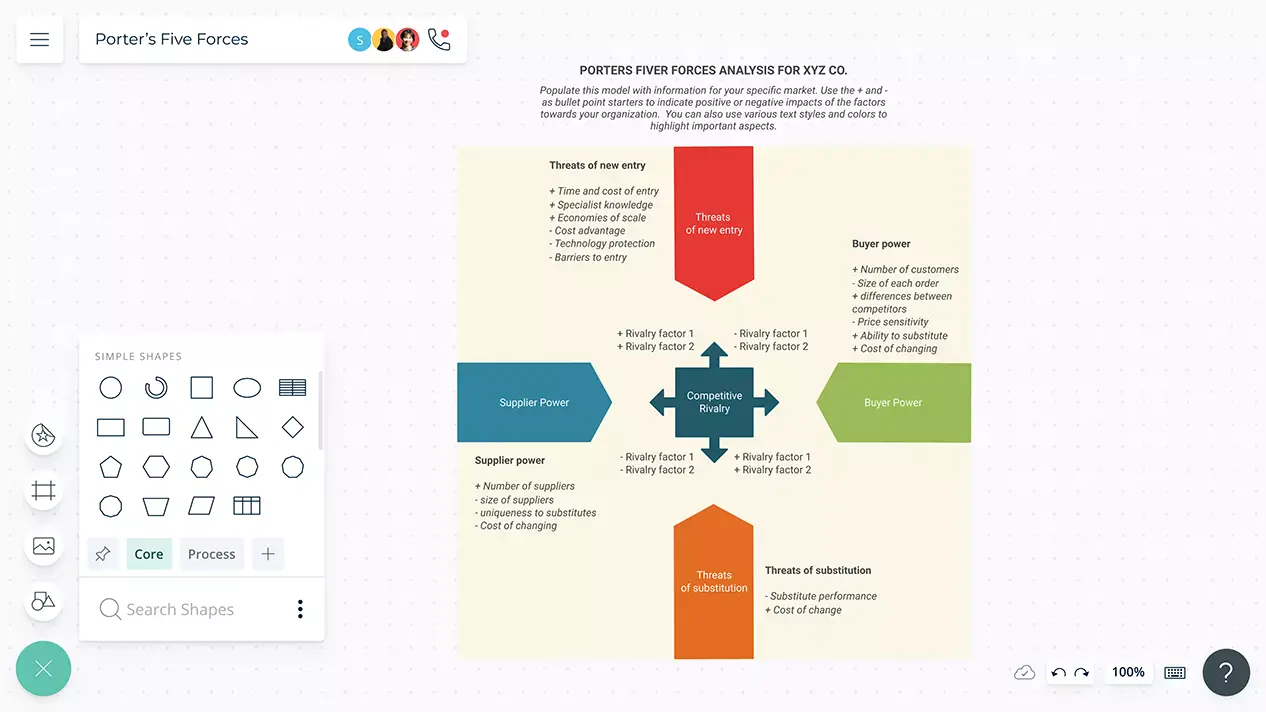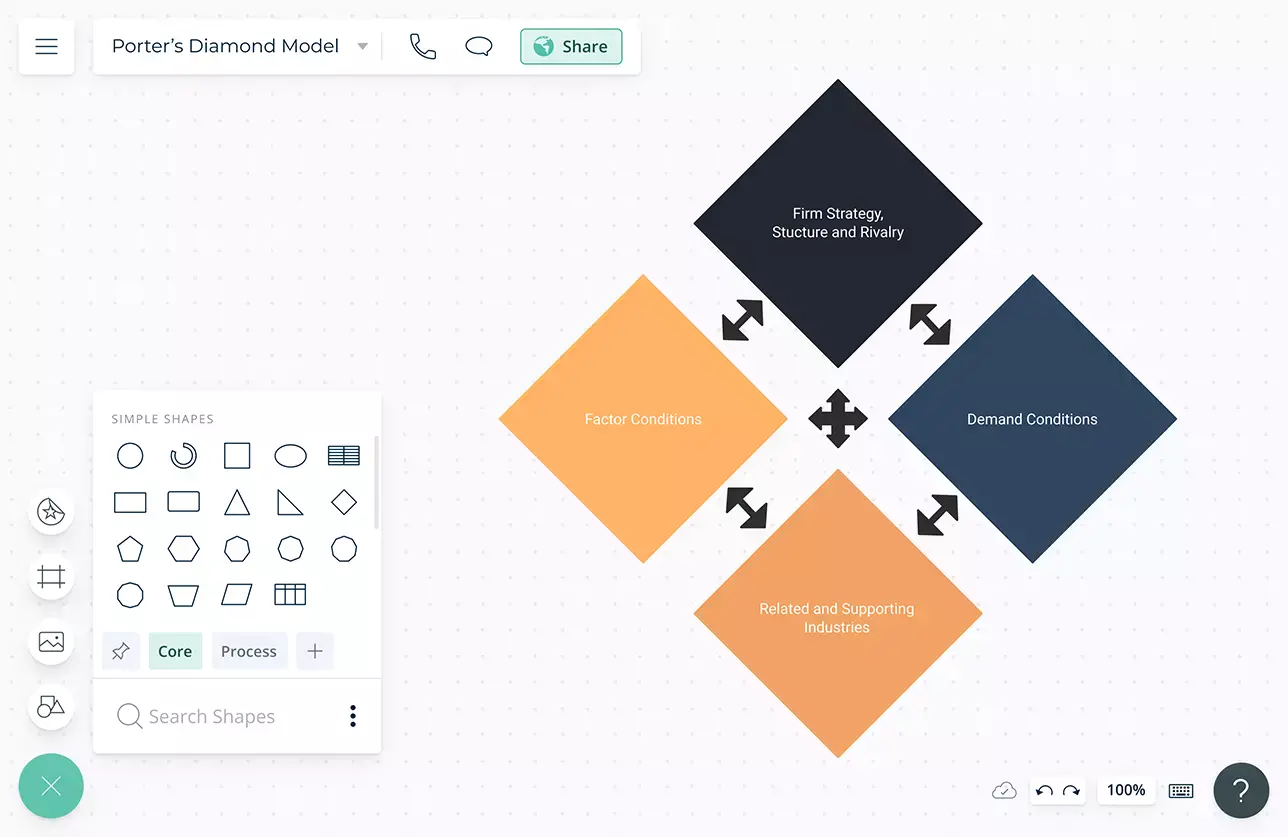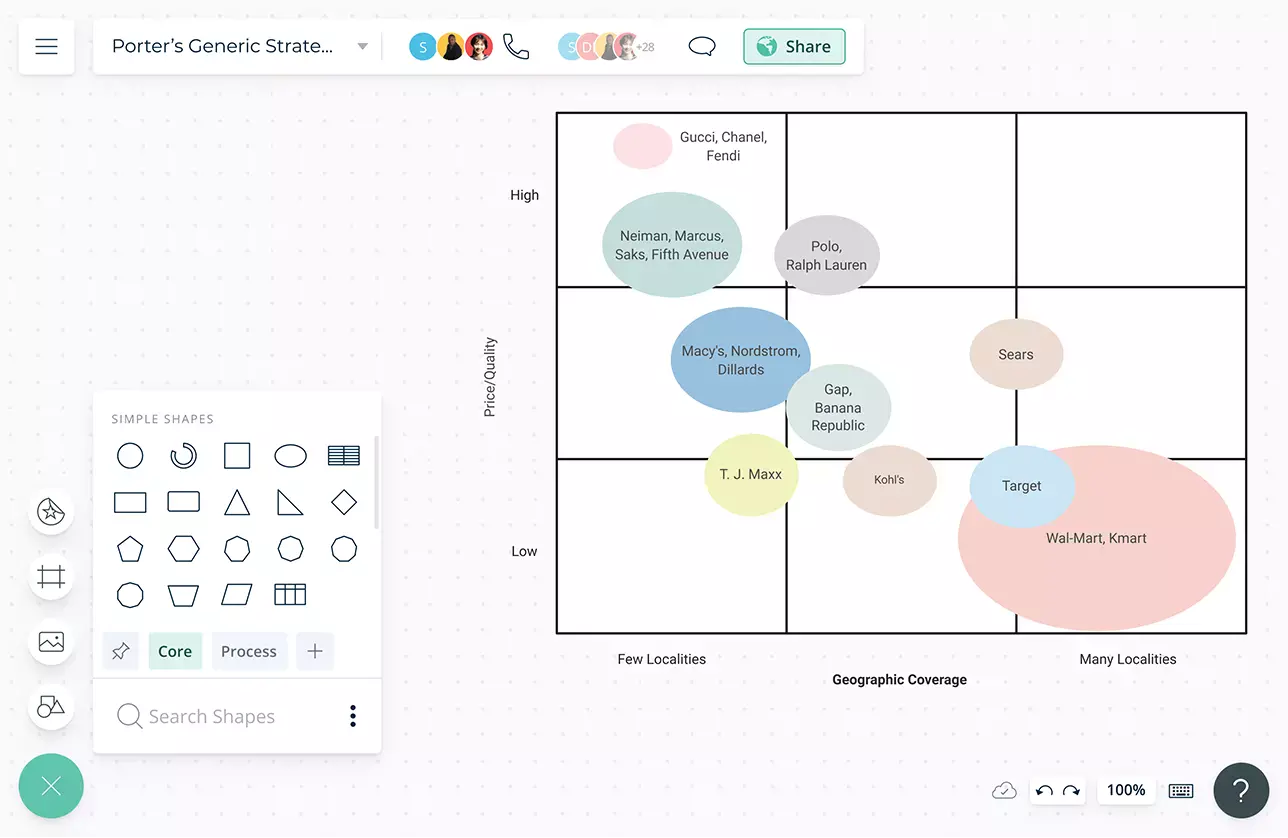Porter’s Generic Strategies Template
Develop Winning Strategies with Competitive Advantage
Identify favorable competitive positions for your organization and formulate go-to-market strategies.
- Real-time visual collaboration to decide on product positioning and marketplace strategies
- Easy-to-use visual canvas to map your ideas with key stakeholders
- Multiple strategic frameworks and templates to uncover business opportunities

- Real-time visual collaboration to decide on product positioning and marketplace strategies
- Easy-to-use visual canvas to map your ideas with key stakeholders
- Multiple strategic frameworks and templates to uncover business opportunities


Create Strategies That Play to Your Strengths

Multiple strategy frameworks and templates to understand the competitive landscape. SWOT, Ansoff Matrix, Scenario Planning, Strategic Grouping, BCG Matrix, and many more.
Configurable color themes and formatting capabilities to highlight multiple competitors and their place in the market.
Whiteboard with freehand drawing to add more flexibility during strategic discussions.
Use frames to split the canvas into multiple strategic frameworks. Conduct five force analysis, action plans, Kanban boards, timelines, grids, and more to understand your marketing strategy.
Add data, docs and links to the canvas to conduct a detailed competitive analysis.
Establish A Common Vision

Built-in video conferencing creates a virtual environment where you can exchange ideas freely.
Use @mention comments to have discussions and follow-ups on the same canvas.
Real-time cursors for any number of participants. Work with your team on a shared canvas to plan strategies.


Keep all Stakeholders In Sync

Multiple access levels and roles to streamline managing, sharing, editing, and reviewing market strategies.
Smart notifications to stay up to date with any iteration in the strategies planned.
Multiple integrations to easily connect with popular platforms like Github, Slack, Google Workspace, Confluence, and more.
Built-in tools to create dynamic and interactive marketing & business strategy presentation, reports, and dashboards for stakeholders.
Export your workspace in multiple formats for easy printing and presentation.
What Are Porter’s Generic Strategies?
Porter’s generic strategies include cost leadership, differentiation, and focus. They were first introduced by Michael Porter in 1985 in his book “Competitive Advantage: Creating and Sustaining Superior Performance’’. They are called generic strategies for the reason that they can be used by an organization of any type or size. These strategies explain ways an organization can gain a competitive advantage in an industry.
How to Implement Porter’s Generic Strategies?
- Cost leadership: firms that follow this strategy aims to become low-cost producers in the industry. It’s aimed at the broad mass market and requires actions like cost minimization in research and development, service, salesforce, advertising, and so on. By doing so, the company can sell its product for a lesser price than its competitors but still achieve a reasonable profit.
- Differentiation: this strategy is also aimed at the broad mass market and focuses on creating a product that must be perceived as unique by its customers. The intention is to provide the customer with superior value that creates brand loyalty, hence making the buyer insensitive to a higher price.
- Focus: this strategy is based on adopting a narrow competitive scope. Here the niche can be a certain geographic market, a certain customer or a narrow range of products. By identifying the nature of the market and the unique needs of its customers, an organization choosing this strategy can develop uniquely low cost (Cost Focus) products or increase differentiation (Differentiation Focus) in the products they offer.
- To identify which of these strategies is the best fit for your organization, conduct a SWOT analysis for each of them. This will help you identify the strengths and weaknesses, and the opportunities and threats that you would encounter if you adopt any of these strategies.
- Next conduct a five forces analysis to gain insight into your competitive landscape.
- Compare the results of your SWOT analysis with that of your five forces analysis. Identify how each of the strategies can help you reduce supplier power, reduce buyer power, gain competitive advantage, eliminate the threat of substitution, and eliminate the threat of new entry. The generic strategy that gives you the strongest set of options is the most ideal for your organization.